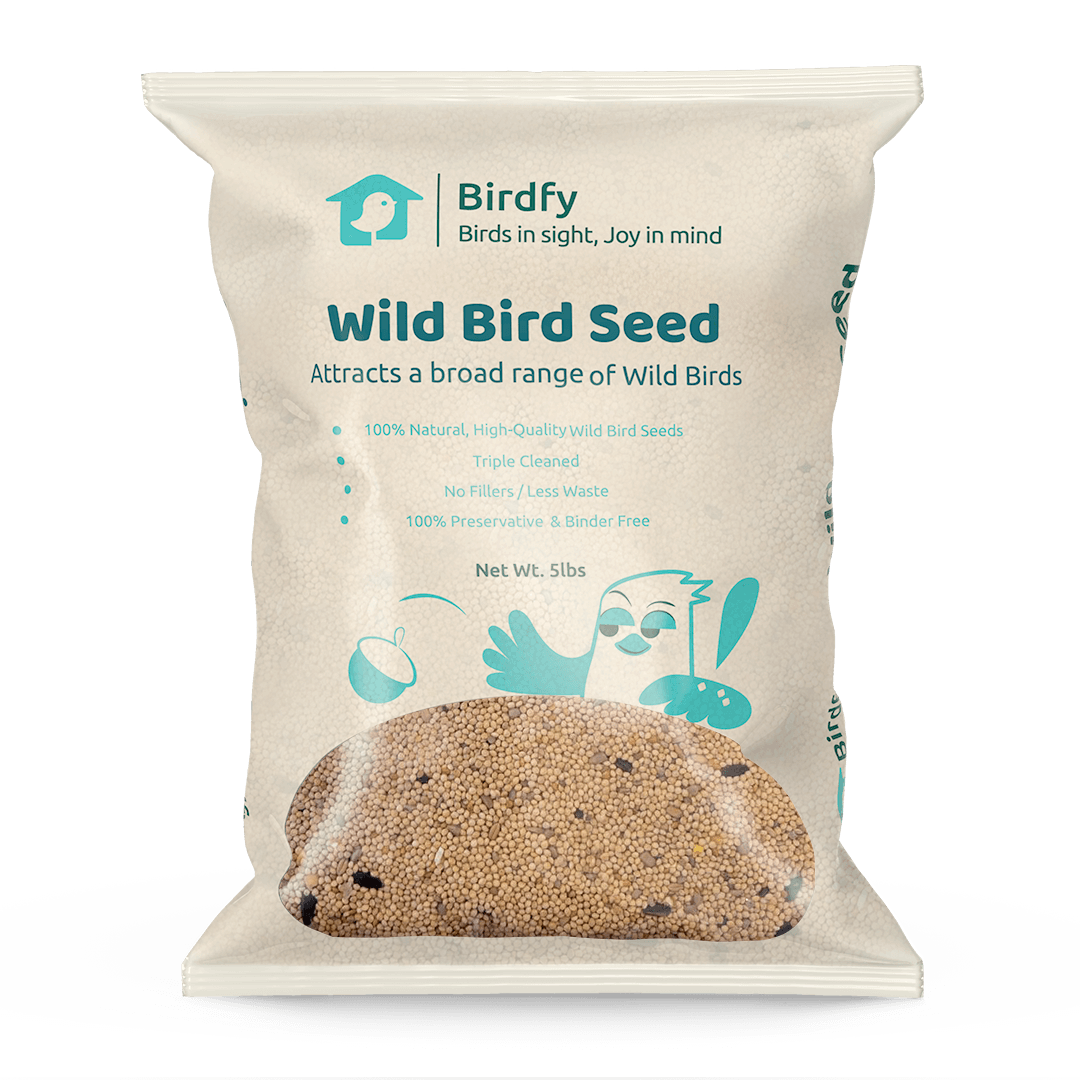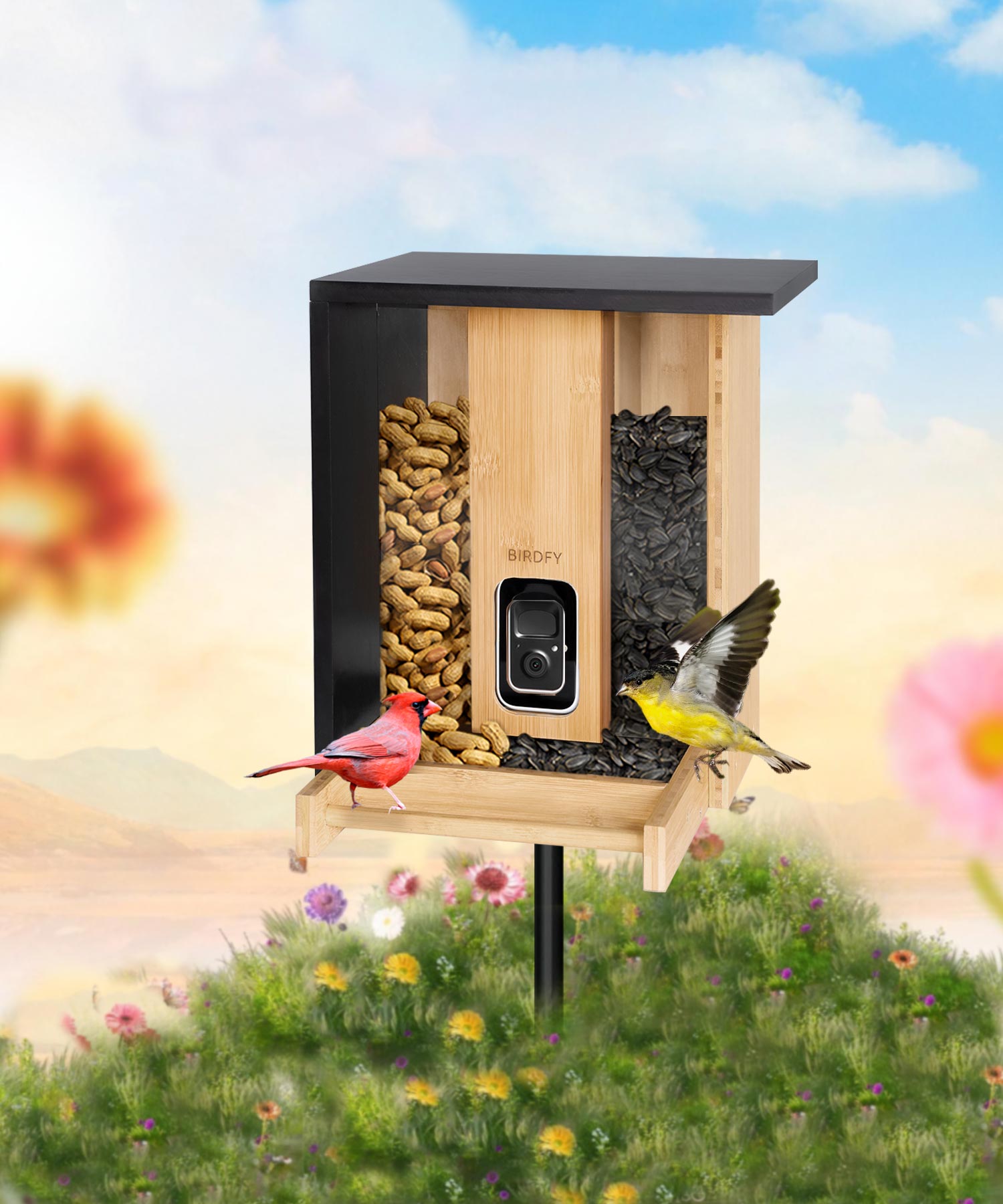What Birds Eat Oranges From Fruit Bird Feeders?

Feeding birds is a lovely and gratifying pastime that brings nature to your doorstep. It attracts a broader range of bird species and gives them crucial nutrients. Oranges are a favorite among many birds because of their bright color and sweet, juicy taste. They are one of the most unique and tasty options. They are attractive to birds like orioles, tanagers, catbirds, and woodpeckers and ideal for backyard feeders.
In this article, we will discuss which birds love responding to oranges, how to prepare and give them to your birds safely, and some tips on how to keep your birdfeeders clean and inviting. So, it’s time to learn about feeding oranges to birds!
Which Bird Likes Oranges?
Oranges are enjoyed by various bird species, especially the fruit eaters. The most common birds attracted to oranges are some of the following:
Orioles: Perhaps the most famous orange lovers are these vibrant birds. Oranges are sweet and juicy fruits that attract these birds to gardens and backyards.

Mockingbirds: They eat oranges, mainly when other food sources are scarce.

Cardinals: They will eat seeds but also like the sweetness of oranges.

Woodpecker: Some woodpeckers, such as the red-bellied woodpecker, may also be attracted to oranges.

Can Birds Or Squirrels Eat Oranges?
Yes, both birds and squirrels can eat oranges. Yet, it should be noted that while oranges are safe for birds, they should be provided in moderation. If consumed excessively, some birds may be overwhelmed by the high acidity and sugar content.
On the other hand, squirrels are also attracted to oranges and may raid bird feeders to get at them. To deter them, squirrel-proof feeders or oranges placed in a spot they can’t reach will work efficiently.
What Birds Are Attracted To The Color Orange?
Several birds are drawn to orange because it usually means ripe fruit. Birds such as:
Orioles: Orioles are among the birds strongly attracted to orange, and they are attracted to orange slices or feeders, as mentioned above.
 Goldfinches: Goldfinches love oranges and like them, especially on fruit.
Goldfinches: Goldfinches love oranges and like them, especially on fruit.
 Blue Jays: Blue jays are intelligent and adaptive. They are attracted to the orange color when it is associated with food.
Blue Jays: Blue jays are intelligent and adaptive. They are attracted to the orange color when it is associated with food.

Do Hummingbirds Like Orange Slices?
Indeed, hummingbirds are primarily nectar feeders, but they can also be drawn to orange slices. Although they may not eat the fruit, its bright color may attract them to the area. Try using orange-colored feeders or adding orange slices near your nectar feeders to attract hummingbirds.

When To Put Out Oranges For Birds?
When birds nest and raise their young, spring and summer are the best times to put out oranges for birds. It’s at times when they need extra energy and nutrients. When birds migrate in the spring or fall, oranges are a much-needed food source as they travel long distances.
How To Choose Fruit Bird Feeders?
When selecting a fruit bird feeder, it’s essential to consider the specific needs of the birds you want to attract and the practical aspects of maintaining the feeder. Here’s a more detailed breakdown of the factors to consider:
Design:
Trays or Spikes: Pay attention to spikes or trays that hold fruit securely. Trays are suitable for placing smaller fruits, such as berries or grapes, while spikes are great for holding larger fruits, like oranges or apples.
Open vs. Covered: Some feeders have covers to prevent rain and direct sunlight from spoiling the fruit. However, open feeders do make it easier for birds to access this food, but they should be cleaned more frequently.
Perches: Feeders with perches or platforms where birds can comfortably land and feed are especially important. Larger birds struggle to balance on smaller feeders.
Material:
Metal: Metal feeders are durable and resistant to chewing pests like squirrels. They are also easy to clean and are also resistant to harsh conditions.
Plastic: Plastic feeders are lightweight, and high-quality plastic feeders are often more affordable. Also, aim for UV-resistant plastic to prevent fading or cracking over time.
Wood: Wooden feeders are aesthetically beautiful but may need more maintenance because they risk rotting and molding. In the case of wood, go for the treated or weather-resistant type.
Ease of Cleaning:
Disassembly: Select feeders that can be disassembled for easy cleaning. Mold, bacteria, and pests can also visit fruit. So, cleaning off the fruit regularly is essential.
Smooth Surfaces: Feeders with smooth surfaces and minimal gaps are easier to clean and not as likely to harbor bacteria.
Drainage Holes: Make sure the feeder has drainage holes that prevent water from pooling and can sap mold.
Squirrel-Proofing:
Feeders with baffles: Some will have baffles or domes that prevent squirrels from getting at the fruit.
Weight-Activated Mechanisms: These feeders may have weight-activated mechanisms, in which a closing mechanism bars access to the fruit when a squirrel lands on it.
Placement: If squirrels are determined, you can place the feeder in a difficult location to reach for them, like a pole with a squirrel guard or an area under overhanging branches.
More Fruits To Feed Birds
Besides the fruits mentioned above, there are other fruits birds love:
Bananas: Birds love bananas, particularly ripe and overripe ones. You can hang whole bananas or cut them into chunks.
Apples and pears: Like apples, pears can be sliced and offered to birds. They are a good source of hydration and nutrients.
Cherries: Remove the pits while you offer cherries to birds. They are particularly popular with robins.
Peaches and Nectarines: These fruits can be sliced and offered to birds. Be sure to remove the pits.
Pineapple: Small chunks of pineapple can attract various birds, especially in tropical or subtropical regions.
How To Keep Fruit In Bird Feeders Clean?
Fruits ripen quickly if warm; in that case, they degrade quickly, especially for molds and to draw the attention of unwanted pests. Follow these essential maintenance tips:
Regular Cleaning
The first step to keeping feeders safe is regular cleaning. Wash feeders at least once a week or more frequently in hot weather. Pour a mixture of 1 part white vinegar to 4 parts water or mild dish soap. Wash thoroughly to remove any residue that might harm birds.
Removing Spoiled Fruit
If you don’t remove the spoiled fruit daily, mold and insects will grow. Bacteria such as moldy, overripe fruit can quickly spread among birds, potentially making them sick. Feeders should be checked regularly for decayed or uneaten fruit and replaced with fresh fruit.
Offering Only Fresh Fruit
Only fresh fruit is offered. If fruit is sitting too long without being eaten, reduce the amount you provide. Cut fruit into small, manageable pieces to encourage quick consumption.
Monitoring for Pests
Ants, bees, and squirrels can become pests around fruit feeders. Ant moats or moving feeders can deter insects. Weight-sensitive feeders and baffles prevent unwanted guests from stealing food.
Choosing the Right Feeder Location
The feeder location also plays a role in choosing the right place and ensuring cleanliness. Shading feeders slows spoilage, and using bird feeders near trees will give birds an escape from predators.
Conclusion
Giving birds oranges or other fruits to feed on can be a great way to draw in various species to your backyard. Many birds, from vibrant orioles to mockingbirds, are attracted to oranges' sweet, juicy flesh, especially during warmer months when they need extra energy for nesting and migration.
Share
































